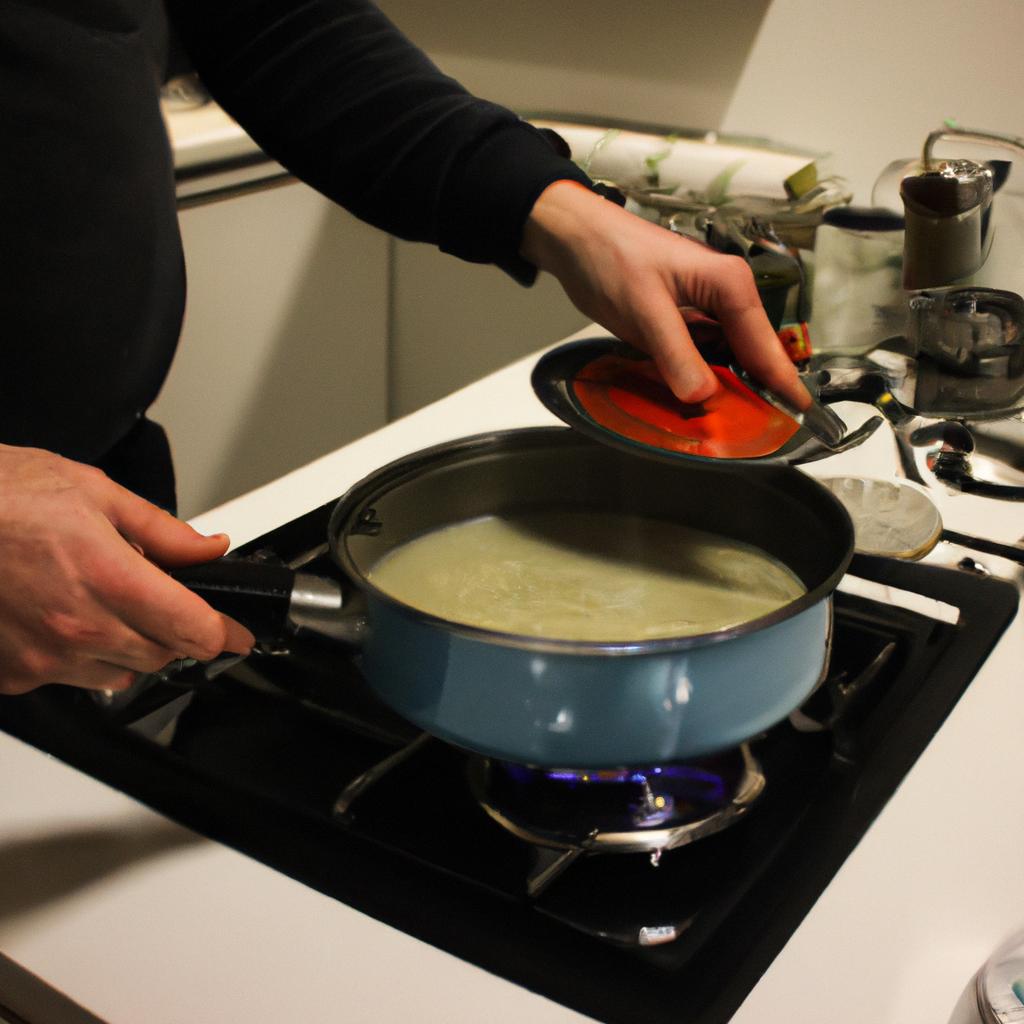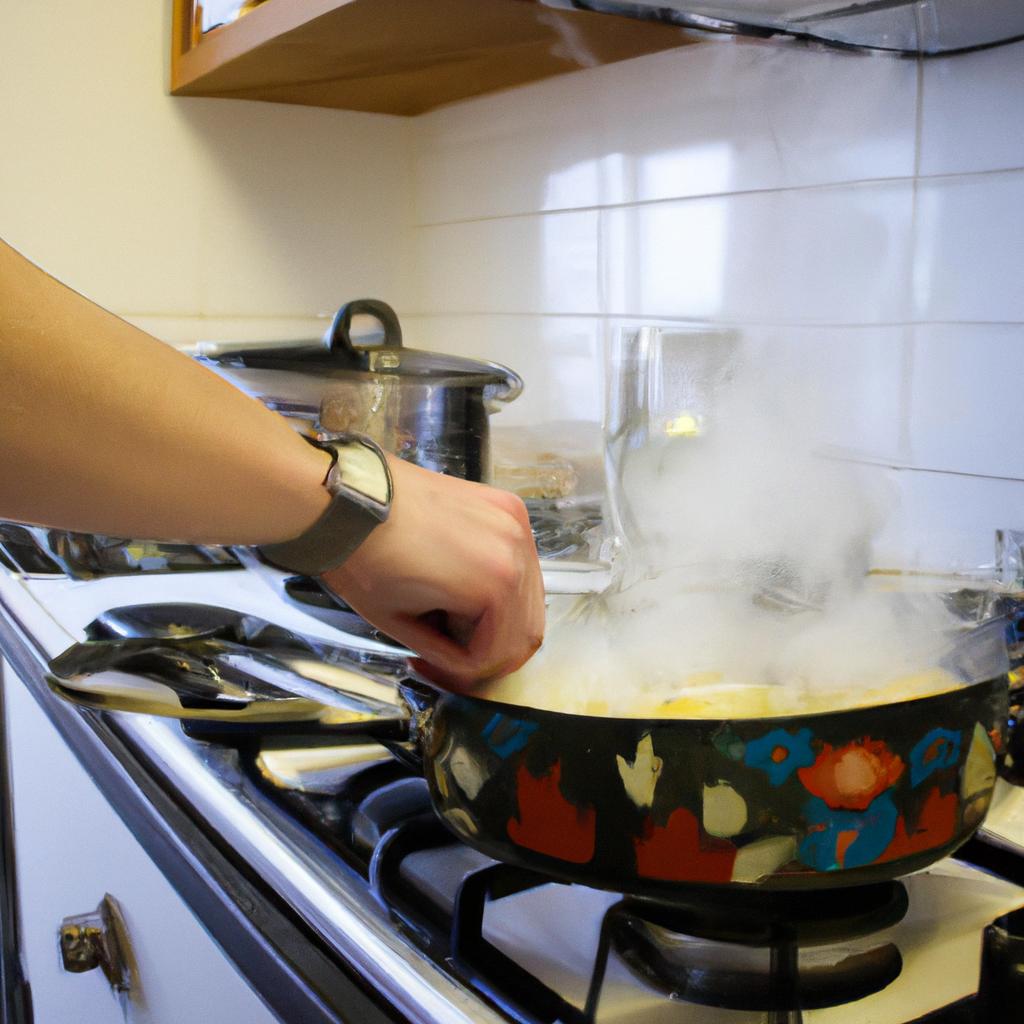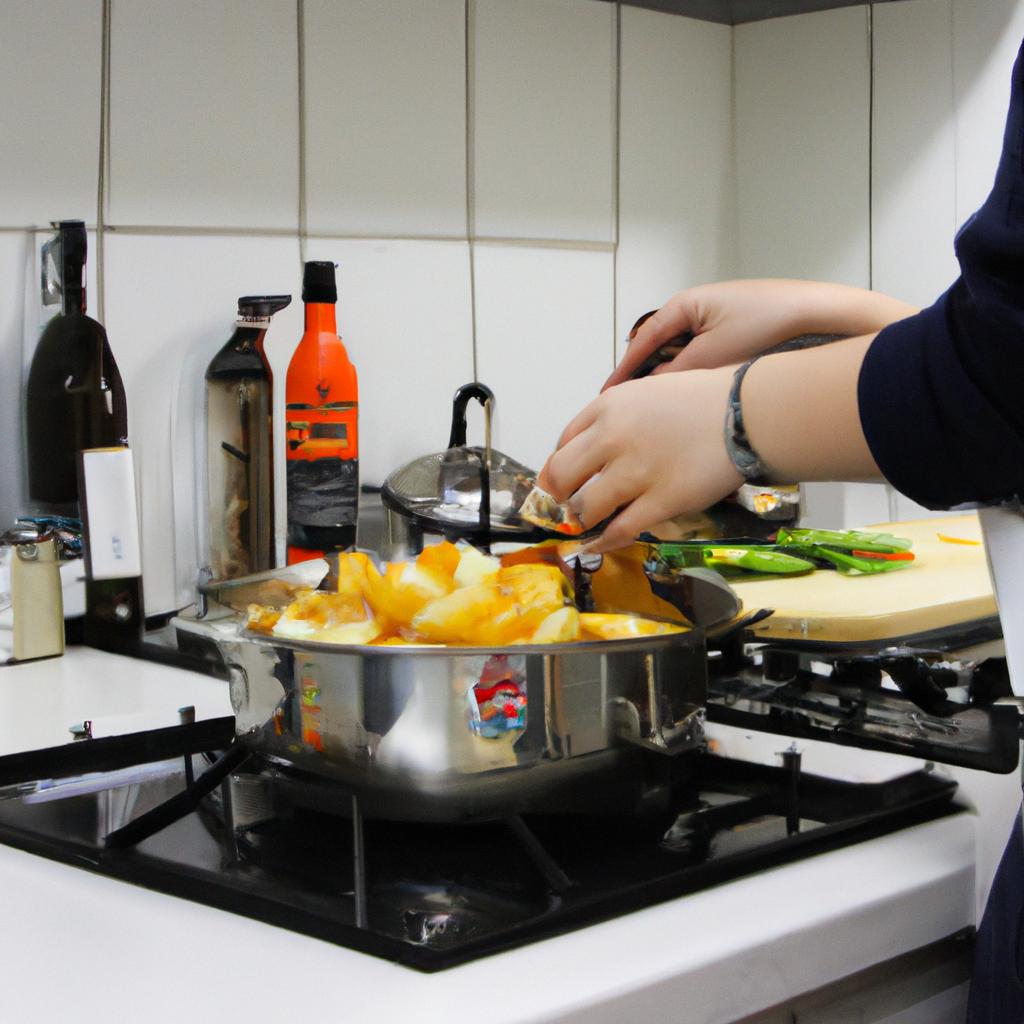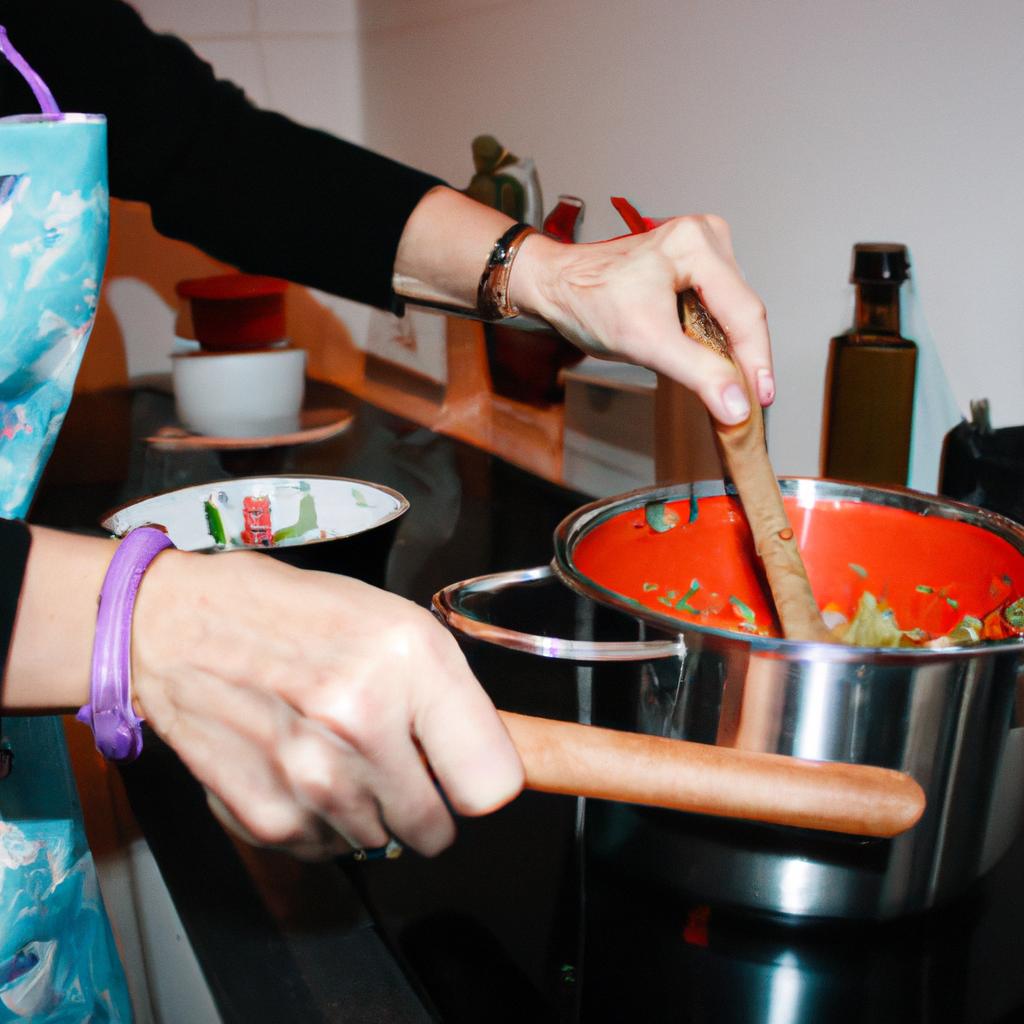In today’s increasingly competitive job market, pursuing a career in the culinary arts requires not only passion and dedication but also financial support. Whether you aspire to become an executive chef at a renowned restaurant or own your own catering business, attending culinary school can provide you with the necessary skills and knowledge to excel in this field. However, the cost of tuition, supplies, and living expenses often pose significant barriers for aspiring chefs. This article aims to guide individuals seeking financing options for culinary school by exploring various forms of financial aid available.
Consider the case of Emily, a high school graduate who has dreamt of becoming a pastry chef since her first bite into a delectable dessert. Despite her talent and enthusiasm, Emily faced the daunting reality that attending culinary school would come with considerable costs. Determined to pursue her dreams, she embarked on a journey to explore different avenues for financial assistance. Through extensive research and guidance from mentors, Emily discovered numerous funding opportunities specifically tailored towards aspiring culinary professionals. By understanding these options and diligently applying for scholarships, grants, loans, and work-study programs relevant to her field of interest, Emily successfully secured enough funds to enroll in culinary school without compromising her aspirations or facing overwhelming debt burdens.
Types of Financial Aid Available
Imagine you have a passion for cooking and dream of attending culinary school to turn your love for food into a successful career. However, the cost of tuition and other expenses may seem daunting at first. Thankfully, there are various types of financial aid available to help make your dreams a reality.
One example is federal student loans, which offer low interest rates and flexible repayment options. These loans can be obtained by completing the Free Application for Federal Student Aid (FAFSA). By providing information about your family’s income and assets, you will be eligible to receive Stafford Loans or PLUS Loans, depending on your circumstances.
In addition to federal loans, grants are another form of financial aid worth considering. Unlike loans, grants do not need to be repaid. The Pell Grant is one such grant that provides funding based on financial need. Other grants specific to culinary students may also be available from private organizations or culinary institutions themselves.
To further assist aspiring culinary students in financing their education, scholarships play a vital role. Scholarships provide merit-based awards that can significantly reduce the burden of tuition costs. Many organizations offer scholarships specifically for culinary students based on academic achievement, creativity in the kitchen, or extracurricular involvement related to the field.
Here is an emotional bullet point list highlighting some benefits of obtaining financial aid:
- Relieves financial stress and allows focus on learning
- Provides opportunities for those who come from lower-income backgrounds
- Increases accessibility and diversity within the culinary industry
- Paves the way for personal growth and professional success
Moreover, here is an emotionally evocative table showcasing different sources of financial aid:
| Type | Description | Example |
|---|---|---|
| Federal Student Loans | Low-interest loans provided by the government with flexible repayment options | Stafford Loans |
| Grants | Funding awarded based on financial need that does not require repayment | Pell Grant |
| Scholarships | Merit-based awards that can significantly reduce the burden of tuition costs | James Beard Foundation Scholarship |
By exploring these various sources of financial aid, aspiring culinary students can find the means to pursue their passion while alleviating some of the financial burdens. In turn, this allows them to focus on honing their skills and achieving success in the vibrant world of culinary arts.
Transitioning into the next section about “Scholarship Opportunities for Culinary Students,” let us delve deeper into specific scholarship programs available to support individuals pursuing a career in the culinary field.
Scholarship Opportunities for Culinary Students
Case Study: Meet Sarah, a passionate aspiring chef who dreams of attending culinary school. Like many students, Sarah is concerned about the cost of tuition and other expenses associated with pursuing her culinary education. Fortunately, there are various types of financial aid available to help individuals like Sarah achieve their goals.
-
Scholarships: One option for funding culinary school is through scholarships. These are merit-based awards that do not have to be repaid. Culinary schools often offer their own scholarships based on academic achievement or specific talents in the field. Additionally, external organizations and foundations may provide scholarships specifically for culinary students.
-
Grants: Another form of financial assistance is grants. Similar to scholarships, grants also do not require repayment but are typically need-based rather than merit-based. The government offers several grant programs such as the Federal Pell Grant and the Federal Supplemental Educational Opportunity Grant (FSEOG). It’s important to research eligibility criteria and application deadlines for these grants.
-
Work-Study Programs: Many culinary schools offer work-study programs that allow students to earn money while gaining practical experience within the industry. Through these programs, students can work part-time jobs on campus or at approved off-campus locations, helping offset some educational costs.
-
Loans: While loans should be approached with caution due to potential debt burden after graduation, they can still be an option for financing your culinary education when used responsibly. There are federal student loan programs available, such as Direct Subsidized Loans and Direct Unsubsidized Loans, which generally offer lower interest rates compared to private loans.
| Financial Aid Options | Description |
|---|---|
| Scholarships | Merit-based awards that don’t require repayment. |
| Grants | Need-based funds provided by governmental or institutional sources. |
| Work-Study Programs | Opportunities for students to earn money while gaining practical experience. |
| Loans | Borrowed funds that require repayment, usually with interest. |
By exploring these various financial aid options, individuals like Sarah can make informed decisions about how to fund their culinary education. Scholarships and grants are ideal as they do not need to be repaid, while work-study programs offer valuable experience in addition to financial assistance. Loans should be considered carefully, understanding the long-term impact of debt.
Now let’s explore scholarship opportunities specifically tailored for culinary students and how you can take advantage of them to further support your educational journey at culinary school.
Grants for Culinary School
Grants for Culinary School
As a culinary student, securing financial aid is crucial to pursuing your passion and achieving your educational goals. While scholarships provide an excellent opportunity for funding, grants are another avenue worth exploring. Let’s delve into the world of grants and how they can support your culinary education.
To illustrate the power of grants in helping students pursue their dreams, consider the case of Sarah Thompson. After being accepted into a prestigious culinary school, Sarah faced the daunting task of financing her education. However, with limited personal funds available, she turned to grants as a potential solution. By diligently researching various grant opportunities tailored specifically for aspiring chefs, Sarah successfully secured multiple grants that covered a significant portion of her tuition fees. This enabled her to focus on honing her skills without shouldering excessive financial burdens.
When it comes to finding suitable grants for culinary school, here are some key aspects to keep in mind:
- Specialized Culinary Grants: These grants are designed exclusively for culinary students and often prioritize those pursuing specific areas such as pastry arts or international cuisine.
- Financial Need-Based Grants: Many organizations offer grants based on applicants’ demonstrated financial need. Completing thorough applications and providing accurate information about your financial situation can significantly enhance your chances of receiving these awards.
- Merit-Based Grants: Some institutions award grants based on academic achievements or exceptional talent in the culinary field. Highlighting your accomplishments and experiences within the application process can strengthen your candidacy for these types of grants.
- Grants from Professional Associations: Various professional associations related to the food industry also extend grant opportunities to support budding culinarians. Exploring these options may lead you to valuable resources and funding.
Now let’s examine a table showcasing different grant programs available to culinary students:
| Grant Program | Eligibility Criteria | Award Amount |
|---|---|---|
| Chef’s Foundation | Financial need-based | Up to $5,000 |
| Culinary Arts Fund | Merit-based | Varies |
| James Beard Foundation | Specialized culinary grants | Varies |
| Women Chefs & Restaurateurs Scholarship Program | Grants for women pursuing culinary education | Up to $10,000 |
In conclusion, grants provide an excellent means of securing financial aid for your culinary education. By exploring specialized culinary grants, addressing financial needs, highlighting merit-based achievements, and considering professional association opportunities, you enhance your chances of finding suitable funding options.
Loans for Culinary Education
When it comes to financing your culinary education, loans are often a viable option. Whether through federal or private lenders, taking out a loan can help bridge the gap between tuition costs and available funds. Let’s delve into the world of educational loans and how they can support aspiring chefs on their journey towards success.
Loans for Culinary Education
In the case of Emily, a passionate aspiring chef who dreams of attending culinary school but lacks the financial resources to do so, grants have become her saving grace. Grants are an excellent option for students like Emily who seek financial assistance without the burden of repayment. These funds are typically awarded based on merit or financial need and can help alleviate some of the financial strain that comes with pursuing a culinary education.
There are several types of grants available specifically for culinary students. Here are some noteworthy options:
-
The James Beard Foundation Scholarship: Established by the renowned culinary organization, this scholarship aims to support individuals pursuing careers in the food and beverage industry. It provides funding to deserving candidates based on their talent, passion, and dedication towards culinary arts.
-
The American Culinary Federation Education Foundation Scholarships: As one of the largest professional chefs’ organizations in North America, the ACF offers various scholarships catering to different aspects of culinary education. From general scholarships to those specific to baking and pastry arts, these opportunities open doors for many aspiring chefs.
-
Local Community Foundations: Many local community foundations offer grants tailored specifically for residents seeking educational opportunities in their region. These grants often consider factors such as academic achievement, financial need, community involvement, and future career goals.
-
Nonprofit Organizations: Numerous nonprofit organizations share a common mission – supporting individuals interested in culinary arts through grants and scholarships. Examples include Careers Through Culinary Arts Program (C-CAP) and Women Chefs & Restaurateurs (WCR), both dedicated to helping talented individuals pursue their culinary aspirations.
To further illustrate how beneficial grants can be for prospective culinary students, let’s take a look at a hypothetical scenario:
Case Study:
Maria is an ambitious high school graduate eager to enroll in a prestigious culinary institute but faces significant financial obstacles. Her family’s income falls within a moderate range, making it challenging to afford tuition fees outrightly. However, Maria’s perseverance and passion for culinary arts lead her to explore grant opportunities. After thorough research and application processes, she successfully secures a grant from the James Beard Foundation Scholarship program. With this financial aid, Maria can pursue her dream of becoming a professional chef without worrying about the burden of student loans.
In summary, grants provide an invaluable opportunity for aspiring chefs like Emily and Maria to alleviate the financial strain associated with attending culinary school. By exploring various organizations that offer these funds specifically tailored for culinary students, individuals are more likely to find scholarships that align with their goals and aspirations. In our subsequent section on “Loans for Culinary Education,” we will further discuss alternative funding options available in pursuit of a culinary education.
Work-Study Programs for Culinary Students
Loans for Culinary Education can be a viable option for students who are looking to finance their culinary school journey. One example of this is Sarah, a passionate aspiring chef who dreams of attending a prestigious culinary institute. However, the cost of tuition and other expenses seems overwhelming to her. In such cases, loans provide an opportunity for individuals like Sarah to pursue their culinary education without worrying about immediate financial burdens.
To better understand how loans can benefit culinary students, let’s explore some key aspects:
-
Loan Options: Various types of loans are available specifically tailored for educational purposes. Federal student loans, such as Stafford Loans or Perkins Loans, have low interest rates and flexible repayment plans that make them popular choices among students. Private loans from banks or credit unions may also be considered but often come with higher interest rates and stricter terms.
-
Application Process: Applying for a loan typically involves filling out paperwork detailing your personal information, financial history, and educational background. It is crucial to research thoroughly and compare different lenders’ terms before making any decisions. Remember to consider factors such as interest rates, repayment options, and eligibility criteria.
-
Repayment Strategies: Once you secure a loan for your culinary education, it is important to plan ahead regarding its repayment. Creating a budget that accounts for monthly loan payments will help you manage your finances effectively while still pursuing your culinary dreams. Exploring options like income-driven repayment plans or refinancing at lower interest rates might also be beneficial in the long run.
Now let’s take a moment to reflect on the emotional impact these considerations may have:
- The prospect of taking on debt can initially evoke feelings of anxiety or stress.
- Finding the right loan option provides reassurance and peace of mind.
- Proper planning and budgeting empower individuals by giving them control over their financial situation.
- Successfully managing loan repayments brings a sense of accomplishment and relief.
Consider the following table illustrating potential emotions associated with loans for culinary education:
| Emotion | Associated Aspect |
|---|---|
| Anxiety | Initial debt burden |
| Relief | Finding suitable loan options |
| Empowerment | Effective planning and budgeting |
| Accomplishment | Successful repayment management |
As you can see, understanding the emotional aspects of financing your culinary education is essential in navigating this process. By being aware of these emotions, students like Sarah can make informed decisions that align with their aspirations.
Tips for Maximizing Financial Aid
Transition from Previous Section:
Having explored the work-study programs available for culinary students, let us now delve into some valuable tips for maximizing financial aid. By applying these strategies and utilizing various resources, you can increase your chances of securing adequate funding to pursue your culinary dreams.
Tips for Maximizing Financial Aid
To illustrate the effectiveness of these tips, consider the case study of Sarah, a passionate aspiring chef who dreams of attending culinary school but is concerned about financing her education. Through careful research and following expert advice on maximizing financial aid opportunities, Sarah was able to secure sufficient funds to enroll in her desired program.
- Research Scholarships: Start by exploring scholarships specifically tailored towards culinary arts and food-related fields. Numerous organizations offer scholarships based on merit, need, or specific criteria such as ethnicity or gender. Websites like Fastweb and Cappex provide comprehensive databases where you can search for relevant scholarships.
- Utilize Grants: Investigate available grants that cater to vocational training or educational pursuits within the culinary industry. Government agencies, private foundations, and charitable organizations often offer grants that do not require repayment. The Federal Pell Grant is an example of a widely accessible grant worth considering.
- Apply for Financial Aid Early: Submitting your Free Application for Federal Student Aid (FAFSA) as early as possible increases your chances of receiving more substantial financial aid packages since some forms of assistance are awarded on a first-come-first-served basis.
- Seek Guidance from Experts: Reach out to financial aid advisors at prospective schools or professional associations dedicated to supporting culinary students financially. These experts can guide you through the application process and help identify additional sources of funding suited to your situation.
These tips form just a small part of the range of possibilities available when seeking financial aid for culinary school tuition. Remember that each individual’s circumstances may vary; therefore, it is crucial to explore all options thoroughly before making any decisions.
| Scholarship Name | Eligibility Criteria | Award Amount |
|---|---|---|
| Culinary Excellence Award | High school seniors pursuing culinary arts. | $5,000 per year |
| Food Industry Scholarship | Undergraduate students in food sciences. | Varies depending on program |
| Diversity in Gastronomy | Students from underrepresented backgrounds. | Up to $10,000 |
| Women Chefs & Restaurateurs | Female students pursuing culinary careers. | Ranges from $1,500-$3,000 |
By diligently researching scholarships and grants, submitting your applications early, and seeking guidance from experts, you can optimize your chances of securing financial aid that will enable you to pursue your passion for the culinary arts.
Remember, funding opportunities are constantly evolving; therefore, staying informed about new programs and sources of assistance is crucial. Explore various resources online or consult with professionals who specialize in supporting individuals seeking financial aid for culinary education. By taking proactive steps towards maximizing your financial aid options, you can turn your dreams into a reality without being overwhelmed by educational expenses.
 Refoksa
Refoksa



